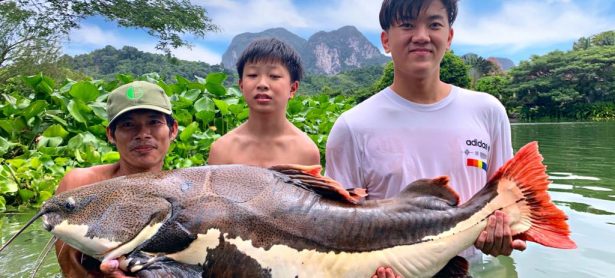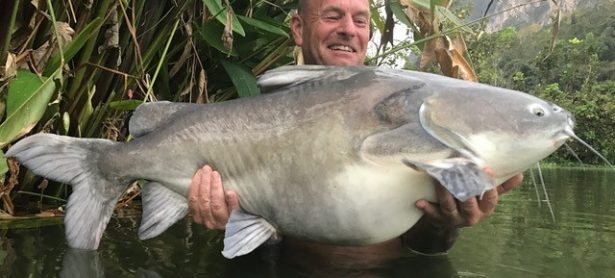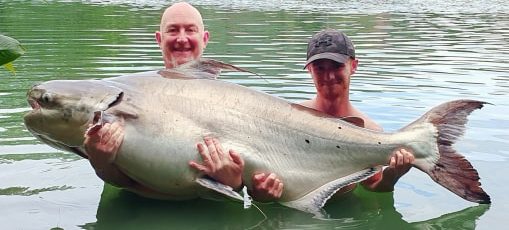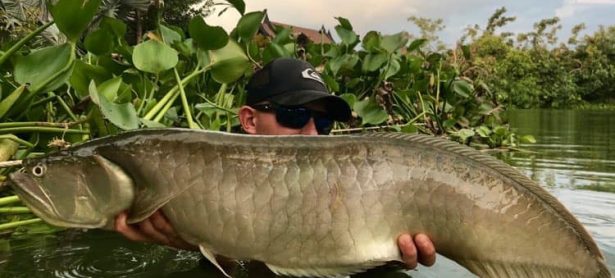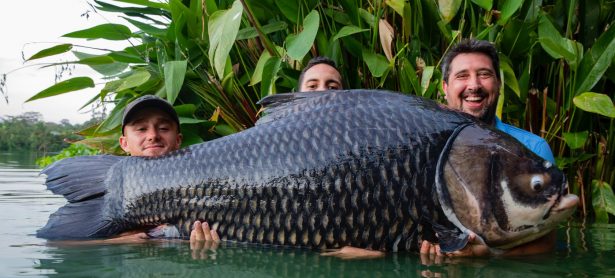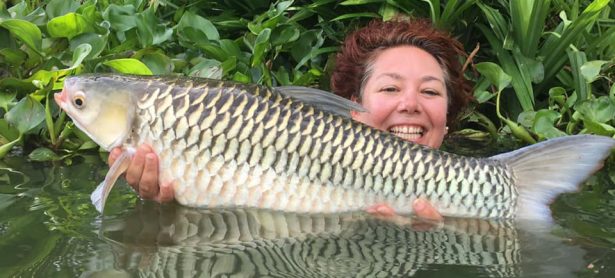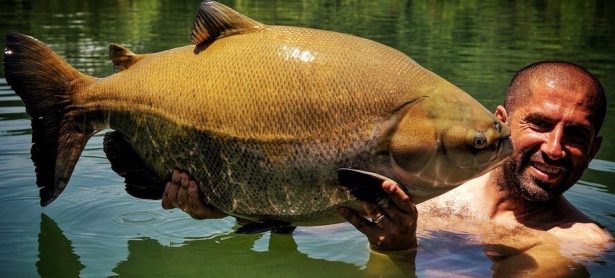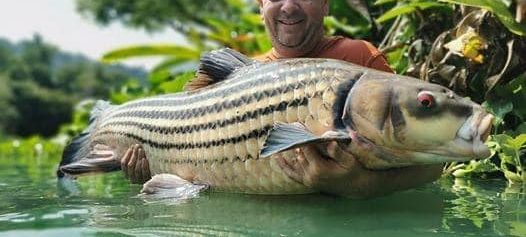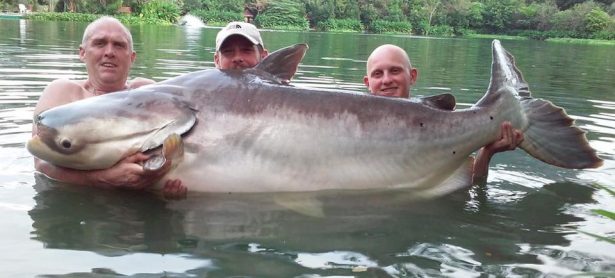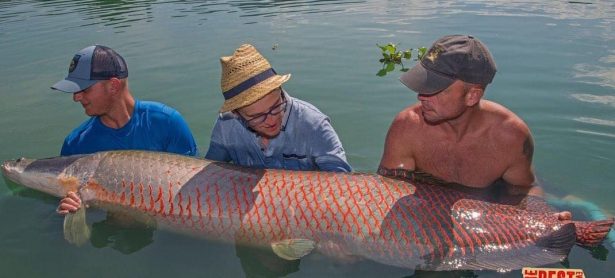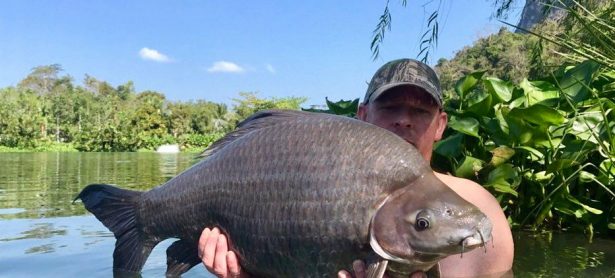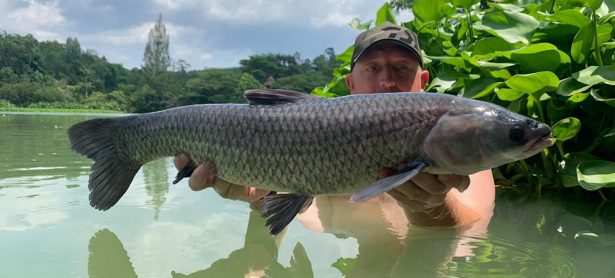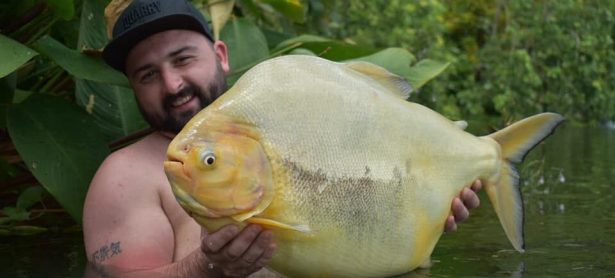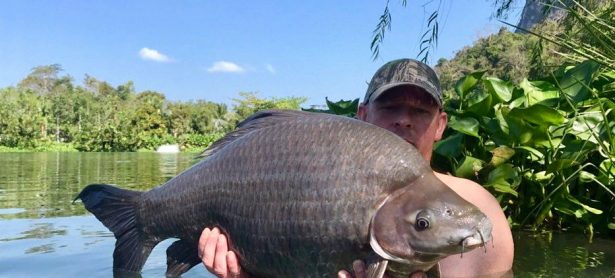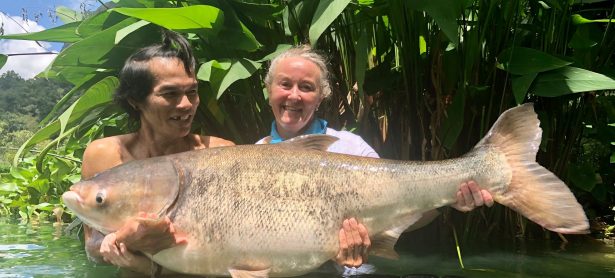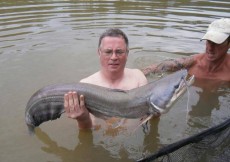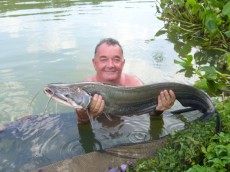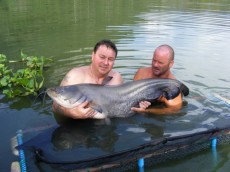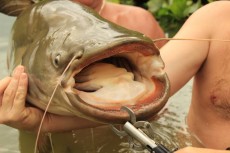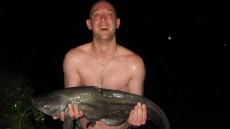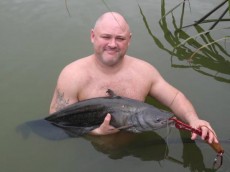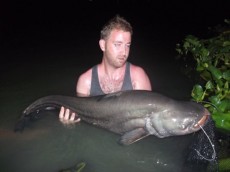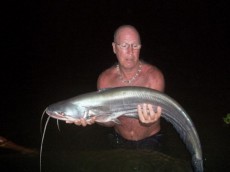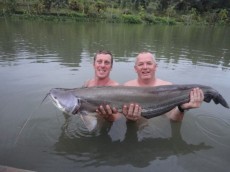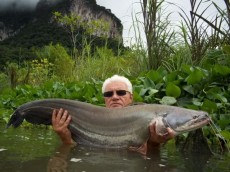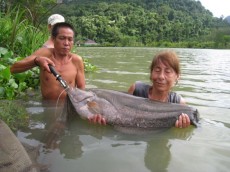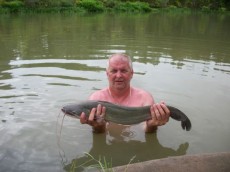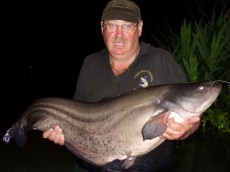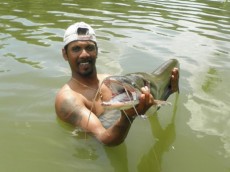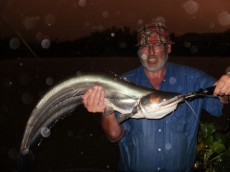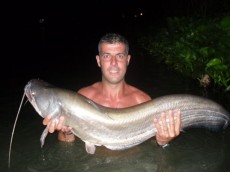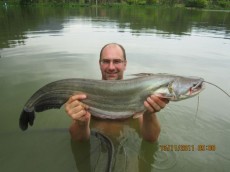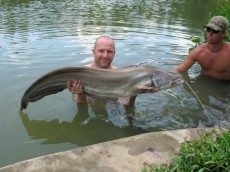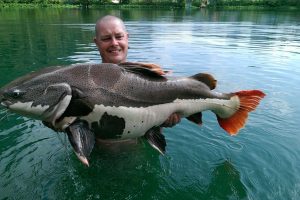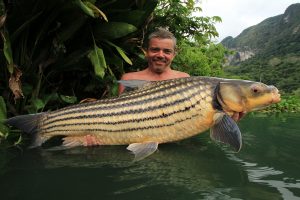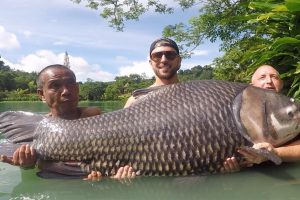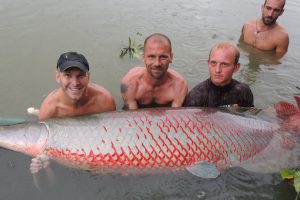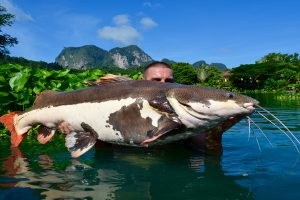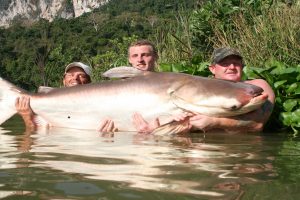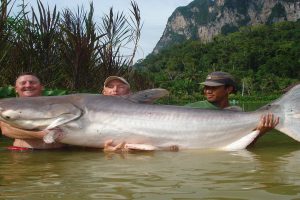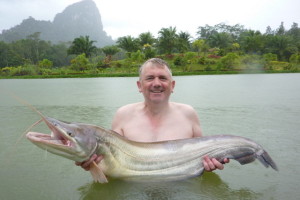 Name: Wallago attu.
Name: Wallago attu.
Species: Wallago attu.
Thai name: Pla krao.
Max length: 2.5m.
Max weight: 50kg.
IGFA record: 18.6kg.
Diet: Fish, squid, animals, frogs, birds, shrimp, crustaceans, and molluscs.
To fish for our wallago attu, squid is one of the better baits. As with all our fish, plumb the depth and find the deep channels that run around the plateaus. By pulling a lead slowly across the bottom, find a silted area, and fish in this area with a bait that is starting to go off and smell. Wallago species are scavengers, which clear up dead carcasses. Use strong hooklinks such as Kryston Ton-Up, as these fish have a double row of small needle-like teeth. You do not need wire, as they are cautious feeders and will detect wire traces and large hooks. You will also need to use a running lead, but due to fishing in silt this should be used with a lead on a stem leading to a sunken float with a run ring attached.
Expect the takes to be slow and in small spurts, and if these fish sense any resistance they reject the bait. Once hooked they go on long, powerful runs. Their favourite trick is to swim around the rear of the plateau and hug the bottom – any ledge or hole gives them cover. If you do happen to get a fish that feels like it is snagged, more than likely it will be a wallago. Slacken off and put the rod back in the rest, wait for the line to move off, and then lean into the fish and keep the pressure on to stop the fish going back to the same spot.
Being a member of the wels catfish family they are capable of swimming backwards as well as forwards, so be prepared at the netting stage. As for your photo, once caught, more of our fishermen lose the fish when trying to hold them, so you are best to wear gloves, as they are very slippery and writhe when you hold them. As with a lot of our fish, do not put your fingers near their mouths, as their needle-like teeth can inflict a nasty bite. These fish are not an easy fish to target, but are well worth the effort for a species not caught by many.
General facts on the wallago attu:
Wallago attu is a species of catfish in the family siluridae or sheathfish. The fish is commonly known by its genus name wallago. It is found in large rivers and lakes throughout Asia from Pakistan to Vietnam and Indonesia, and is also reported from Afghanistan. The wallago is very popular throughout Asia for its fine eating qualities, and in Bengal and Assam, it is known as boal. It’s common to find huge frogs and fish inside its stomach when cut for cooking. It has been claimed that in some areas of Thailand the natives fear the species because of its believed habit of eating small ducks, dogs, and small children.
The wallago attu is silver in colour and has a broad head with two pairs of barbules; one set short and the other long. It has double rows of vomerine teeth, small eyes, a peculiar long dorsal fin, and an anal fin running from just below their pectoral fins to their tails. They are shaped like a dagger, hence the nickname sheathfish. In the wild the wallago attu inhabits large rivers, canals and lakes. They live in slow moving water in the mud and silt where they hide in any holes, especially undercut banks. They spawn between May and July only in the hours of darkness. They pair up and spawn near the surface over flooded grassland where streams enter the main body of water. For this reason we do not believe the wallago attu will breed here at Gillhams.



